GWLA Supports WPATH’s Response to NY Times Article About Puberty Blockers
GWLA Supports WPATH’s Response to NY Times Article About Puberty Blockers
The methods of the authors of the article come up short in their interpretation and application of available data and — in effect — support inaccurate, harmful narratives about puberty blockers.
BY GRACE O’CONNOR, MA, LMFT
The methods of the authors of the article come up short in their interpretation and application of available data and — in effect — supports inaccurate, harmful narratives about puberty blockers. | BY GRACE O’CONNOR, MA, LMFT

Gender Wellness of Los Angeles supports the response from WPATH / USPATH concerning the New York Times article, “They Paused Puberty, But Is There a Cost?” published on November 14, 2022. Gender affirming care continues to be an imperative for transgender and gender-diverse (TGD) teens and adolescents. The spreading of inaccurate information harms the transgender and non-binary communities and further marginalizes an already marginalized and oppressed population. Media outlets publishing articles regarding the TGD population need to be informed by facts and the most recent clinical research, as opposed to innuendo and anecdotal evidence.
We present a couple of excerpts from WPATH / USPATH’s response, followed by a link that will allow you to read (and download) the point-by-point debunking of the reporting:
“[the article] …furthers the atmosphere of misinformation and subjectivity that has grown to surround the area of gender affirming medical interventions for transgender youth. The methods of the authors of this piece come up short in their interpretation and application of available data; the article supports inaccurate narratives that puberty blocking medicines are conclusively harmful to long-term bone density or other health outcomes, and that transition reversal / regret is a common outcome for these treatments. Additionally lacking in the article is an explicit statement that any harms which may exist outweigh the substantial benefits these treatments confer to transgender youth, and we wish to respond below to certain specific statements and references made in this article.”
“We agree that ‘less vitriol, more science,’ as stated in conclusion by the authors, is needed in this area. This includes responsible reporting that takes into consideration realistic estimates of the prevalence of transition reversal, a nuanced and transparent discussion of all bone health factors, and an overall risk-benefit analysis that includes the substantial risks of delayed or denied treatment. Misinformation about the science behind the care of trans youth, such as what is presented in this article, can be and has been used to justify political actions or even violence against the trans and gender-diverse community. With growing efforts to ban medically necessary gender-affirming care for trans youth, and attacks on the rise, as was recently seen in the mass murder at Club Q in Colorado Springs, CO, measured and responsible journalism is ever the more essential. With the recent release of the WPATH SOC8, USPATH is working to explore quality assurance and fidelity in the provision of this life-saving care in the US, and will report the findings and recommendations of our group once the process is completed.”


Connect with GWLA